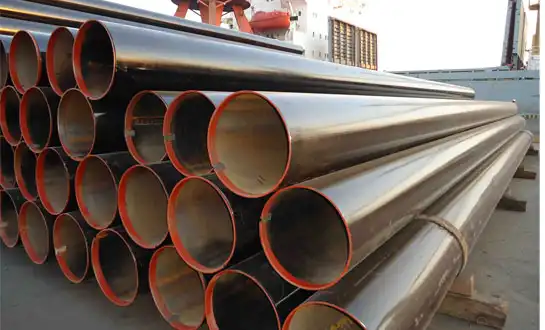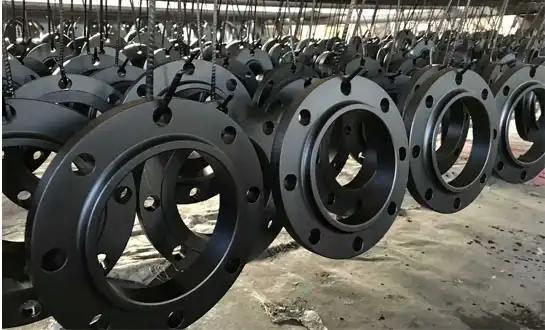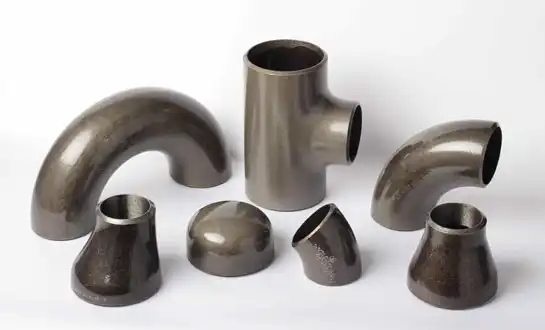The Role of Cryogenic Piping in the Global LNG Supply Chain
Liquefied natural gas has emerged as a cornerstone of global energy transition, requiring sophisticated infrastructure to transport and store this fuel at temperatures reaching minus 162 degrees Celsius. Cryogenic piping forms the critical backbone of the LNG supply chain, enabling safe and efficient transfer of super-cooled natural gas from production facilities through shipping terminals to end-user regasification plants. The specialized engineering requirements for cryogenic piping systems demand materials capable of maintaining structural integrity at extreme low temperatures while preventing heat ingress that causes boil-off losses. This infrastructure supports growing international LNG trade volumes connecting gas-rich producing nations with energy-hungry importing countries across continents. Understanding the technical complexities, material specifications, and operational considerations of cryogenic piping reveals why this technology represents an indispensable element in meeting global energy demands through cleaner-burning natural gas.
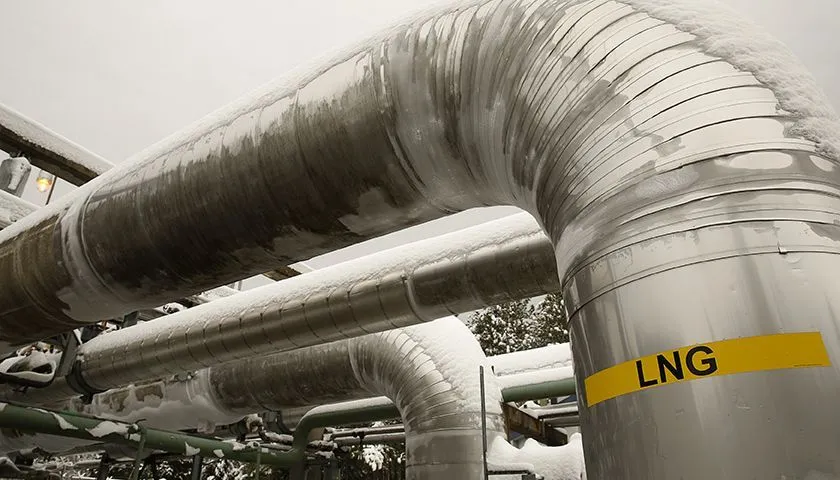
Material Selection and Engineering Requirements for LNG Applications
Specialized Alloys for Ultra-Low Temperature Service
Cryogenic piping systems handling liquefied natural gas require carefully selected materials that retain ductility, toughness, and strength at temperatures where conventional carbon steels become brittle and prone to catastrophic failure. Austenitic stainless steels including 304L and 316L grades provide excellent low-temperature properties through their face-centered cubic crystal structure that resists brittle fracture mechanisms. Nickel alloys such as Invar and 9% nickel steel offer exceptional performance combining adequate strength with superior impact resistance at cryogenic temperatures. The material selection process considers thermal contraction rates, weld compatibility, and long-term stability under repeated thermal cycling. Material testing protocols verify Charpy V-notch impact values at design temperatures, ensuring adequate fracture toughness margins against brittle failure modes. The economic balance between material costs and performance requirements drives engineering decisions, with austenitic stainless steels dominating moderate-scale installations while specialized nickel steels serve large-diameter transfer lines at major LNG terminals.
Thermal Insulation Systems and Heat Leak Management
Effective thermal insulation represents a critical design element for cryogenic piping, minimizing heat ingress that vaporizes liquid natural gas and creates operational losses, safety hazards, and economic penalties. Multi-layer vacuum insulation provides superior thermal performance for stationary piping runs, creating high-vacuum spaces between inner and outer pipes that virtually eliminate conductive and convective heat transfer. Cellular glass, polyurethane foam, and perlite insulation systems offer practical solutions for above-ground installations where vacuum insulation proves economically prohibitive. The thermal conductivity of insulation materials increases significantly with moisture absorption, demanding vapor barriers and proper installation techniques to maintain long-term performance. Heat leak calculations account for conduction through pipe supports, radiation from surrounding structures, and convection in imperfect insulation systems. Advanced insulation monitoring systems detect degradation through temperature sensors distributed along cryogenic piping routes, enabling predictive maintenance before performance deteriorates substantially.
Expansion Joint Design and Thermal Contraction Accommodation
Temperature differentials exceeding 180 degrees Celsius between ambient installation conditions and cryogenic operating temperatures create substantial thermal contraction in LNG piping systems, demanding sophisticated expansion compensation strategies. Metallic bellows expansion joints fabricated from austenitic stainless steel accommodate linear thermal movements while maintaining pressure boundary integrity and vacuum insulation continuity. Flexible piping configurations incorporating expansion loops and offsets provide geometric flexibility that absorbs thermal contractions through elastic bending. The design of cryogenic piping support systems must permit thermal movement while controlling system loads, employing sliding supports with low-friction bearing materials that function reliably at cryogenic temperatures. Anchor points and directional restraints guide thermal contractions along intended paths, preventing buckling instabilities and controlling reaction forces on connected equipment. Finite element analysis validates complex three-dimensional piping geometries, ensuring stress levels remain within code allowables throughout normal operation and emergency scenarios.
Critical Infrastructure Points Throughout the LNG Value Chain
Production Facility Liquefaction and Storage Systems
Liquefaction plants represent the origin point of the LNG supply chain, incorporating extensive cryogenic piping networks that handle refrigerants, process streams, and final LNG product across multiple temperature zones. Process trains cool natural gas through multi-stage refrigeration cycles, with cryogenic piping conveying mixed refrigerants at progressively lower temperatures until achieving final liquefaction. Heat exchanger connections demand precise fabrication and alignment to prevent thermal stress concentrations during repeated cooldown and warmup cycles. Storage tank connections require specialized design accommodating significant differential settlements between massive tank foundations and surrounding cryogenic piping distribution networks. Loading arm systems at marine berths employ articulated configurations that connect shore tanks to vessel manifolds while accommodating tidal variations and thermal contractions. Plant safety systems incorporate pressure relief manifolds that safely vent boil-off gases to flare systems located at safe distances from process areas.
LNG Carrier Ship-to-Shore Transfer Operations
Marine terminals facilitate the critical interface between land-based infrastructure and seagoing LNG carriers, employing sophisticated cryogenic piping systems that enable rapid cargo transfer while managing safety risks. Loading arms fabricated with multiple swivel joints provide flexible connections accommodating all six degrees of vessel freedom resulting from tides, winds, and cargo weight changes. Emergency release couplings integrated into loading arm cryogenic piping automatically separate in breakaway scenarios, preventing catastrophic damage if vessels drift beyond design limits. Vapor return lines equalize pressures between ship and shore tanks while managing boil-off gases displaced during loading. Pre-cooling procedures gradually reduce temperatures in transfer piping from ambient to cryogenic conditions, minimizing thermal shock stresses. Transfer rates through marine terminal cryogenic piping can exceed 12,000 cubic meters per hour at major facilities, completing vessel operations in 12 to 24 hours depending on cargo size.
Regasification Terminal Distribution and Sendout Systems
Import terminals receiving LNG carriers employ cryogenic piping networks that transfer cargo to storage, maintain inventory during demand fluctuations, and feed high-capacity vaporizers converting liquid back to gaseous state for pipeline injection. Storage tank discharge systems require carefully designed cryogenic piping that accommodates internal pump installations while maintaining thermal insulation integrity through tank penetrations. Vaporizer feed systems distribute LNG from storage through cryogenic piping to multiple vaporization trains, providing operational flexibility and redundancy. High-pressure cryogenic pumps elevate LNG pressures to levels enabling efficient heat transfer in vaporizers while overcoming downstream pipeline pressures. Boil-off gas handling systems collect vapors from storage tanks and transfer operations, either reliquefying through cryogenic processing or combusting when economics favor disposal. Modern regasification terminals increasingly incorporate cryogenic piping infrastructure supporting emerging applications including LNG bunkering services and truck loading facilities serving remote markets.
Conclusion
The reliable transfer of super-cooled natural gas across production, shipping, and regasification facilities is made possible by cryogenic piping for sale infrastructure, which in turn supports the worldwide LNG supply chain. Choosing the right materials, managing heat effectively, and accommodating expansion are all crucial for a successful outcome in any given application. Investing in cryogenic piping technologies that have been shown to be reliable and safe for supply chains is crucial as the volumes of LNG commerce continue to rise.
HEBEI RAYOUNG PIPELINE: Your Partner for Industrial Piping Solutions
While specialized cryogenic piping demands unique materials and engineering, HEBEI RAYOUNG PIPELINE TECHNOLOGY CO., LTD. provides the foundational industrial piping components that support energy infrastructure worldwide. We supply diverse industrial pipe fittings, including buttweld carbon steel elbows, tees, reducers, and pipe flanges, which ensure secure connection points for ambient and moderate-temperature applications throughout LNG facilities beyond cryogenic piping zones. Our product lineup includes solutions for all design requirements ranging from straight lines through complex angles to flexible joints, serving utility systems, process auxiliaries, and support infrastructure at liquefaction plants and regasification facilities. With GOST-R and SGS certifications validating export compliance and ISO 9001:2015 quality systems ensuring consistent manufacturing standards, we deliver reliability that energy projects demand. As leading pipes and fittings manufacturers, we understand that comprehensive facility construction requires diverse piping solutions beyond specialized cryogenic piping, including carbon steel systems for water, air, nitrogen, and fuel gas services. Contact our engineering team at info@hb-steel.com to discuss how our industrial piping components can support your energy infrastructure projects with proven quality and competitive delivery schedules.
References
1. International Gas Union. (2024). World LNG Report: Infrastructure Development and Global Trade Trends. IGU Publications, Annual Edition.
2. Mokhatab, S., Mak, J.Y. & Valappil, J.V. (2023). Handbook of Liquefied Natural Gas: Design, Construction and Operation of LNG Facilities. Gulf Professional Publishing, Second Edition.
3. American Society of Mechanical Engineers. (2024). ASME B31.3 Process Piping: Special Requirements for Cryogenic Service. ASME Code for Pressure Piping Standards.
4. Barron, R.F. & Nellis, G.F. (2023). Cryogenic Systems: Design and Applications in Energy Infrastructure. Oxford University Press, Third Edition.
5. Petroleum Institute of Thailand. (2023). LNG Terminal Design Standards: Cryogenic Transfer Systems and Safety Protocols. International Petroleum Technology Journal, Volume 15, pp. 78-102.
6. European Industrial Gases Association. (2024). Guidelines for Cryogenic Piping Systems in Natural Gas Liquefaction Plants. EIGA Technical Documentation Series.

Need a quote? Want to see samples? Just say hello. We’re friendly. We’re fast. And we’re ready when you are.
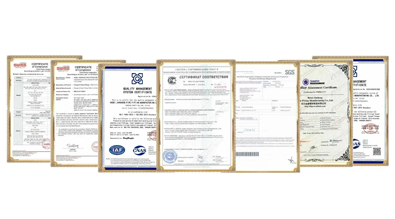
Welcome to RAYOUNG – Strong Pipes, Stronger Promise
